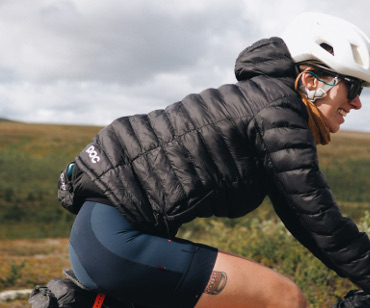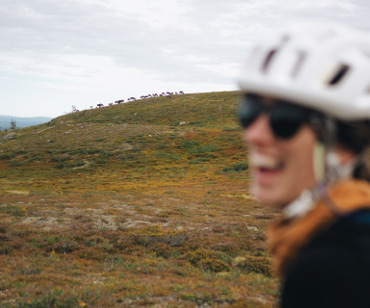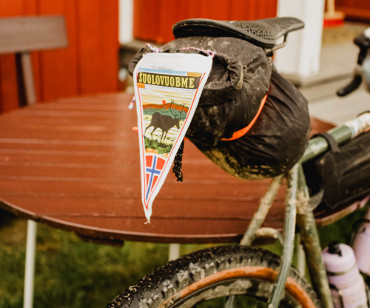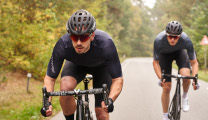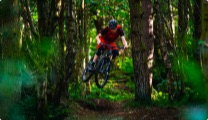The land above the Arctic circle is not the most well-known bikepacking destination, not even for Finns or Norwegians. Henna Palosaari from the Shimano Gravel Alliance was no exception, despite the fact that she’s snowboarded on these mountains outside Ylläs for years. When she heard about the 400 km Arctic Post Road route from Ylläs, Finland to Alta, Norway, she knew she had to see what was under the snow.
On June 22nd, Sami Sauri got a message from Henna that read: “I’m planning to ride Arctic Post Road in August, would you be keen to join?”. “Omg, yes would love that”, was Sami’s instant response. Next question: mountain bike or gravel. “I was thinking of doing the MTB version of the route but with a gravel bike”, Henna wrote back with laughing emojis. Sami was in.

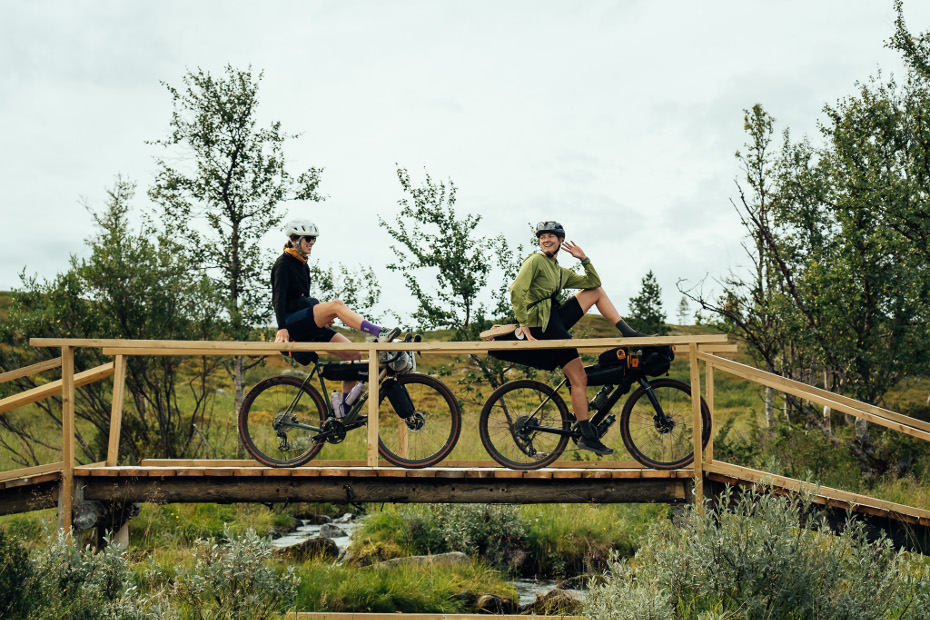
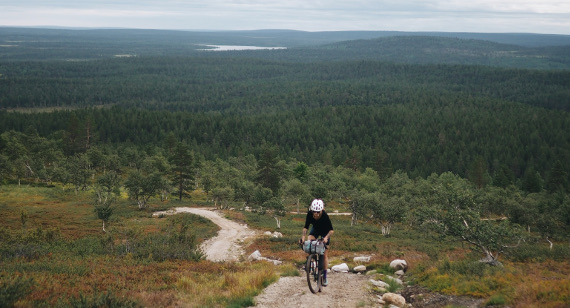
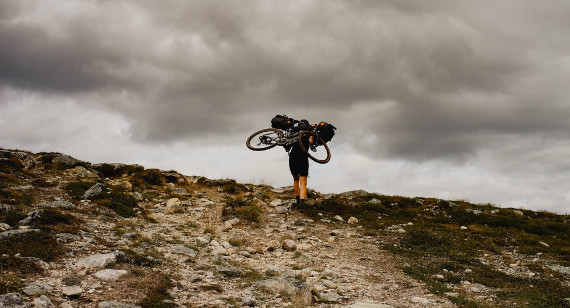
The Arctic Post Road bikepacking route follows the remnants of the old Copenhagen-Alta post road. It starts from the fells of Pallas-Ylläs national park in Finnish Lapland and runs through the Finnmark highlands all the way to Alta on the Arctic Ocean. The wilderness area created by Finnish and Norwegian Lapland is three times the size of Belgium and one of the largest spaces like this in Europe. With a reindeer-to-man ratio of 5:4, you will likely encounter more reindeer than people on the trails. However, reindeer are not here to be adorable entertainment for bikers, they are also economically important for many Lappish and Sámi. To respect that, the route is closed during the critical season in late September when herds of thousands of reindeer are gathered together for fall round-ups.
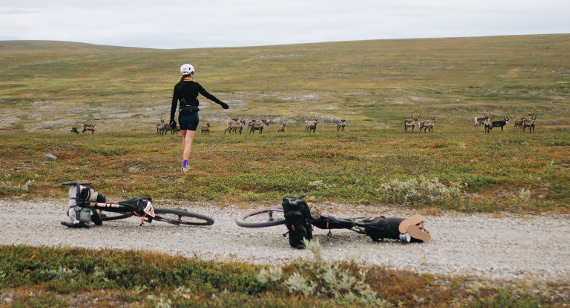
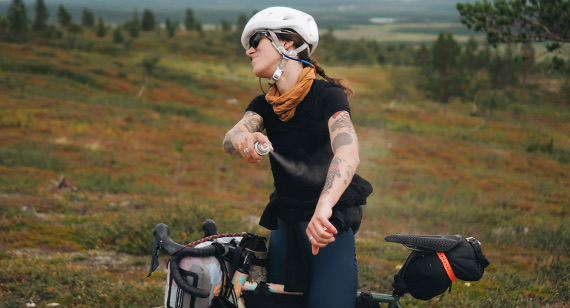
Besides that, it is also recommended to take Räkkä into consideration – that’s the season when there is high population of mosquitos, black flies, biting midges and horse flies in the Arctic, unless you plan on wearing a full body mosquito net while riding. Despite never having been to Lapland before, Sami had heard all about the mosquitoes and duly came prepared with a mosquito head net, bracelets and repellent. Räkkä starts usually by late June and lasts usually till mid-August which makes the end of summer and fall a great time for bikepacking in the Arctic. By September, the Northern lights often light up the night sky as well.
Riding the Arctic
Forest dirt roads and occasional tarmacked roads lead us from Ylläs to Pallas, where we get the first glimpses of the beautiful seven fells of Pallastunturi. While the original plan was to avoid all roads, Henna knew that the next section from Pallastunturi would be tough on an MTB, let alone a gravel bike, so they made the decision to go by road and stop off at Restaurant Loimu instead. When we turned into the parking lot at Loimu, it felt like we had stepped back in time – a really charming and modest spot, but the gas pumps and interior radiate a serious 70s vibe. Experiencing the simplicity of life up North and the local culture combined with the tranquility of the long wilderness sections creates a bikepacking experience that takes you miles away from the city hustle.
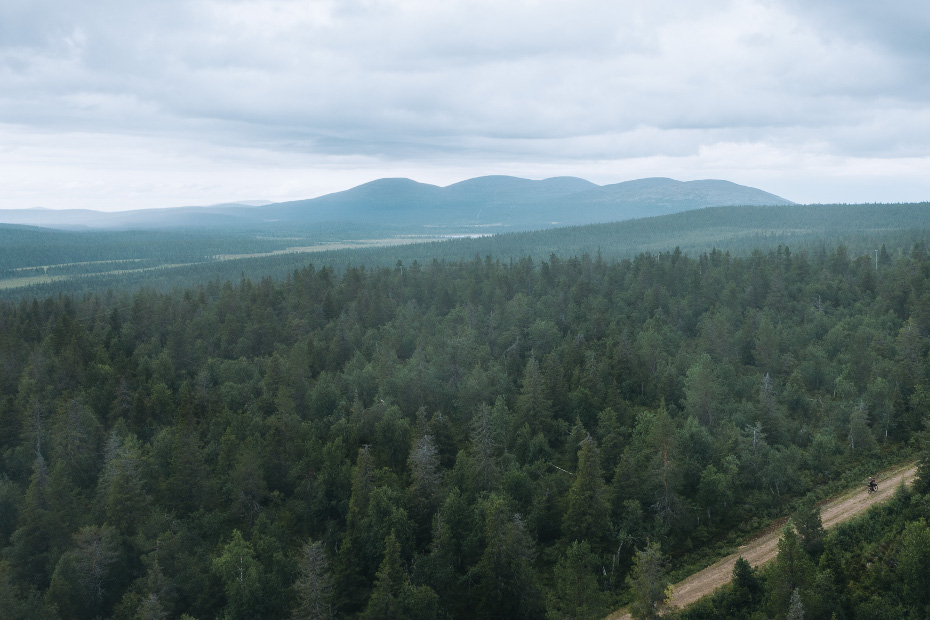
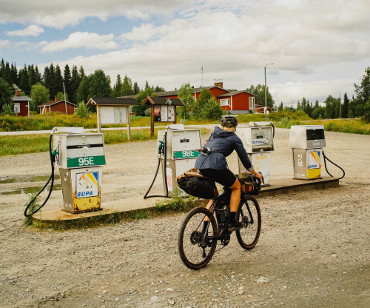
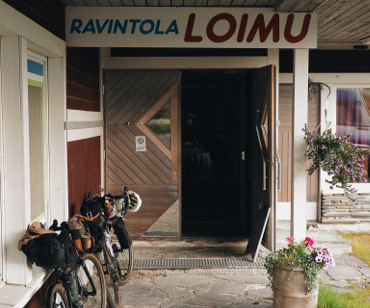
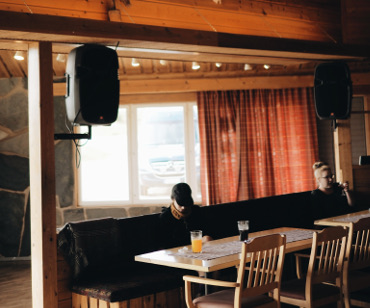
The sky started to clear after some rain showers, and we get back on the forest road that leads us to our camp spot by the lake. A quick dip in the clear watered lake and mosquito nets on before dinner, grateful that there are so many lakes and rivers to make our lives easier when it comes to camping and resupplying our water. In signature Spanish style, dinner is accompanied by a cheese plate. “If the dinners are this great, I will only go camping with Sami from now on,” Henna says with a grin.
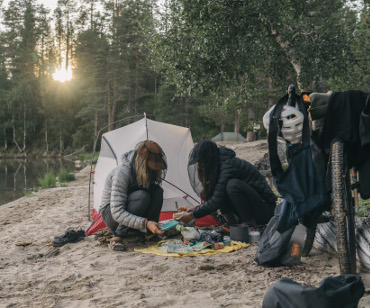
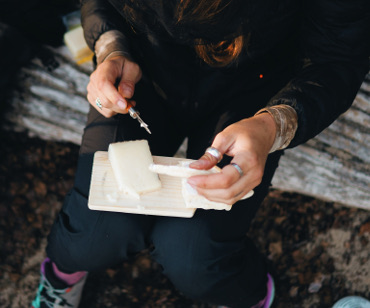
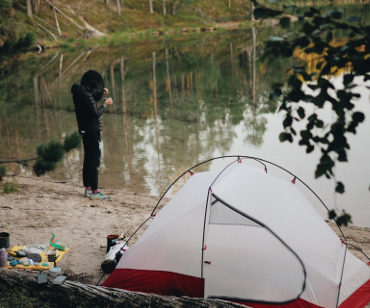
The first two kilometres of the second day gave a taste of what lay ahead on the Arctic Post Road – steep trails, rocky sections and loose sand that forces you off the bikes from time to time. It slowed us down, but we were pleased to be away from the road, especially as we were rewarded with amazing vast views in every direction. The route is more well-known as a hiking route, so the hikers of the Hetta-Pallas hiking trail were surprised to see two girls with gravel bikes up there riding down the rough trails, balancing on the wooden boards and carrying their bikes over rocks.
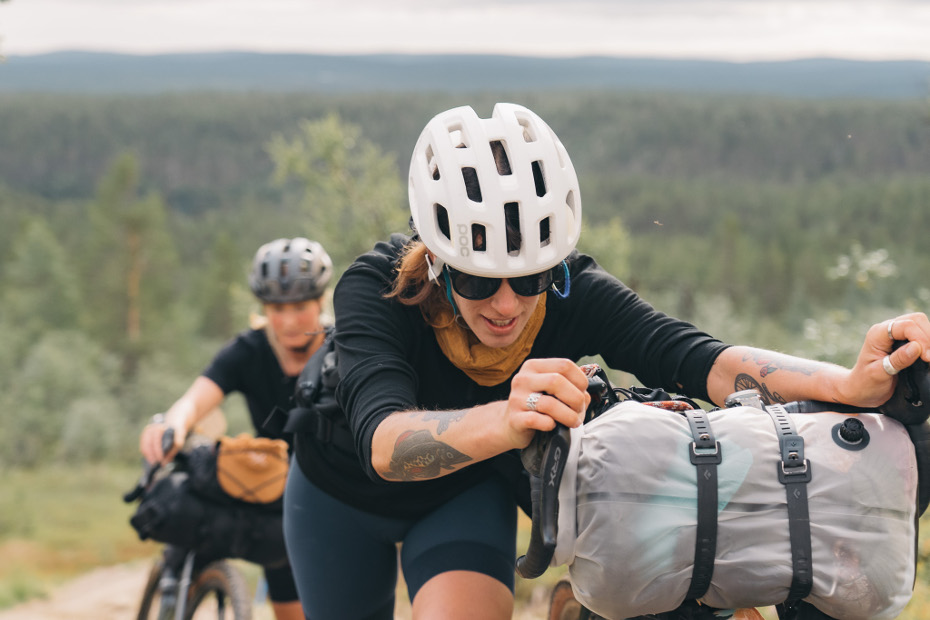
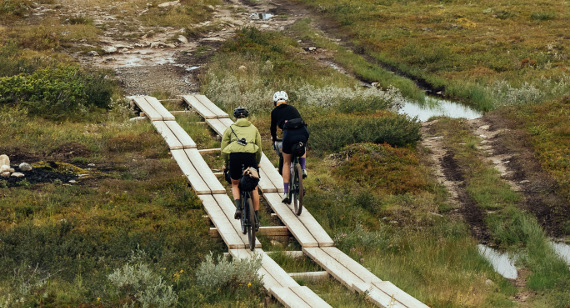
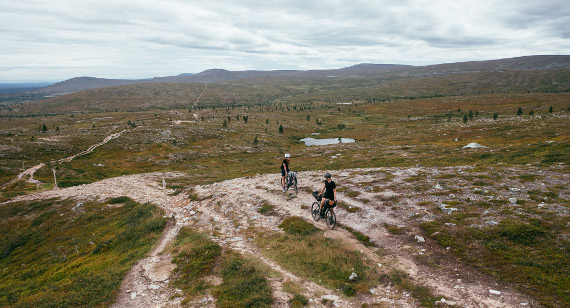
We stopped to enjoy local treats at the wilderness cafe and learned from the local lady that there had not been a mushroom year like this in 60 years, which explained why we saw mushrooms wherever we looked. In Hetta, we restocked and decided to stick to the MTB route even though we had heard rumours of the next 25 kilometres being rough. The rumours proved to be right – not even that much because of the rocks, but because of the endless swamps and bogs that could not be ridden through. Tired and a bit broken, we stopped at the wilderness hut halfway through the section but decided to keep riding because the forecast promised heavy rain that would make the trail even worse. We also thought there was accommodation in the next village, Näkkälä, but there were no signs when we got there, and Google maps was no use due to the poor signal. We were tired and starting to feel the chill. Finally, a quad driver told us the owner of the place was out fishing without his phone and he was the only one who had access to the key. Knowing that the next accommodation was 13km away in the wrong direction, we decided to pitch our tent on the parking lot of the hiking trail. When the tent was up, the pouring rain started and lasted the whole night.
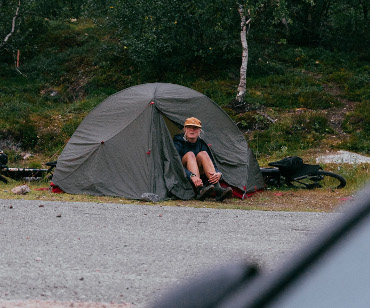
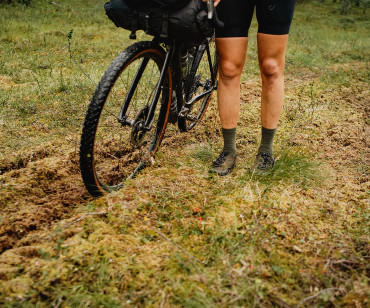
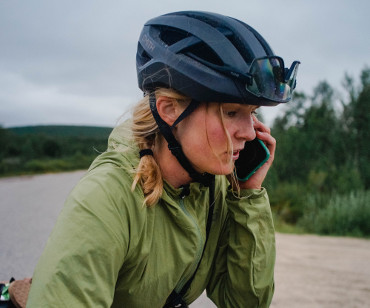
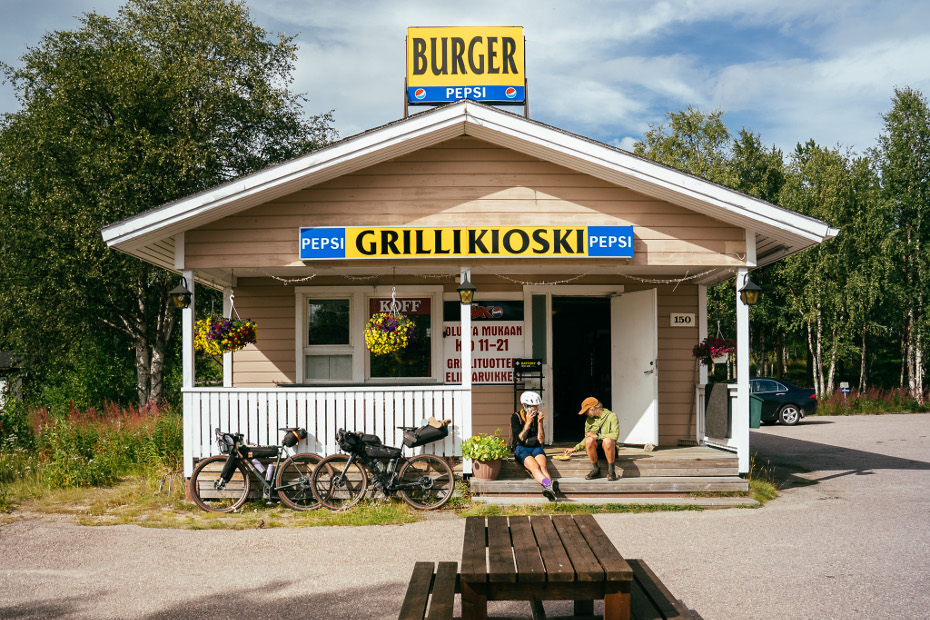
The cold and rainy morning meant that the start of the third day was not the most inviting, but we hopped on the bike with the goal to reach Kautokeino and sleep somewhere warm and dry for the night. The rocky trails changed into sandy trails but the big puddles from last night’s rain as well as the swamp and river crossings kept the pace slow. In this section, we really felt like we were on our own in the middle of nowhere. “The most surprising part has been how long you can go on a gravel path before you see a house again. Endless hours and endless kilometres on the bike without seeing anybody or anything, not even an animal or a bird,” Sami says pensively. Finally, after what felt like hours and hours of riding, we saw huts on the other side of a lake. First, we just had to cross a thigh-deep river mouth to get there. When we got to the other side, the owner of the house welcomed us in Norwegian and invited us in for a coffee. Starving and tired, we were thrilled to have a break and meet the family.
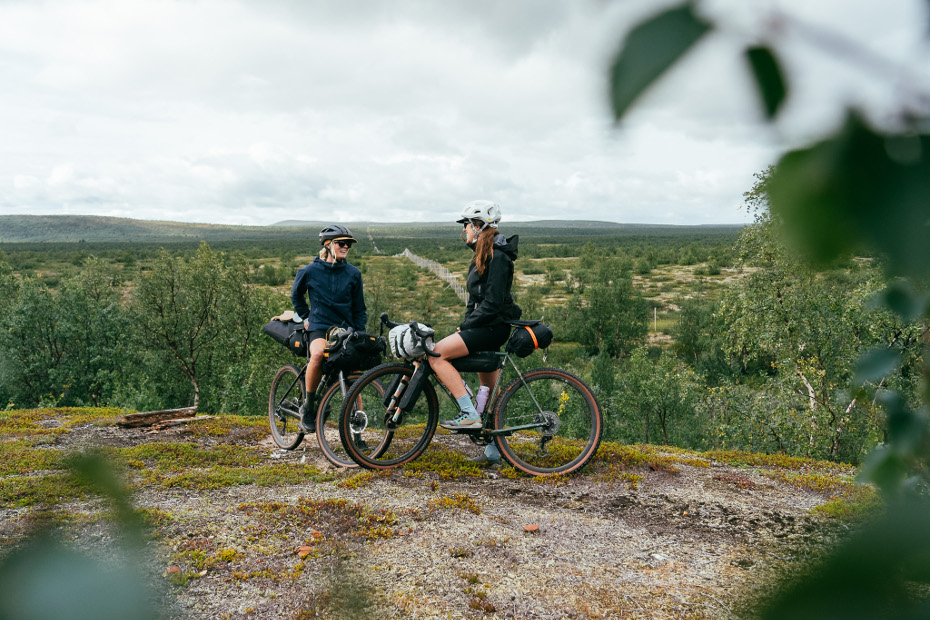
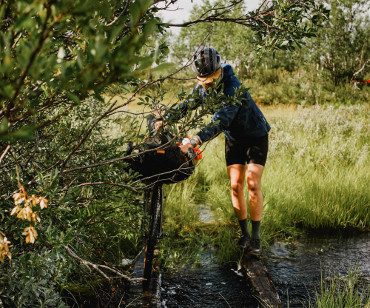
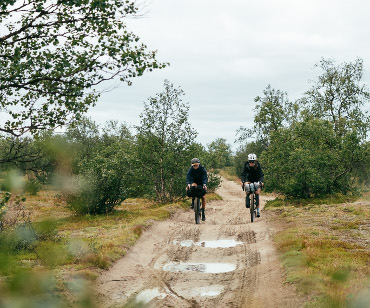
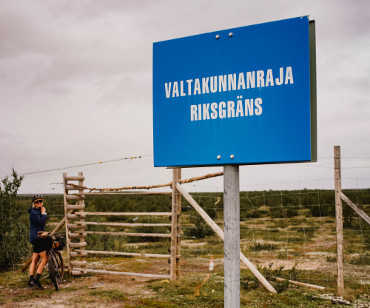
It was idyllic. The grandma was sitting on a deck knitting, the young boy spoke perfect English, sheep were roaming the backyard, we shared stories over local food, including reindeer tongue, dried reindeer meat, cold-smoked salmon, brown cheese sandwiches, cloudberries and blueberries – Norway at its finest. “Meeting this family made our day. Riding is fun but getting to meet local people along the way makes it memorable,” Henna and Sami agree. When we asked if we could pay something, the answer was a resounding no from the dad of the family, who instead opened his arms for a hug. When we are ready to leave, the dad runs outside with a big piece of dried reindeer meat to take on our journey.
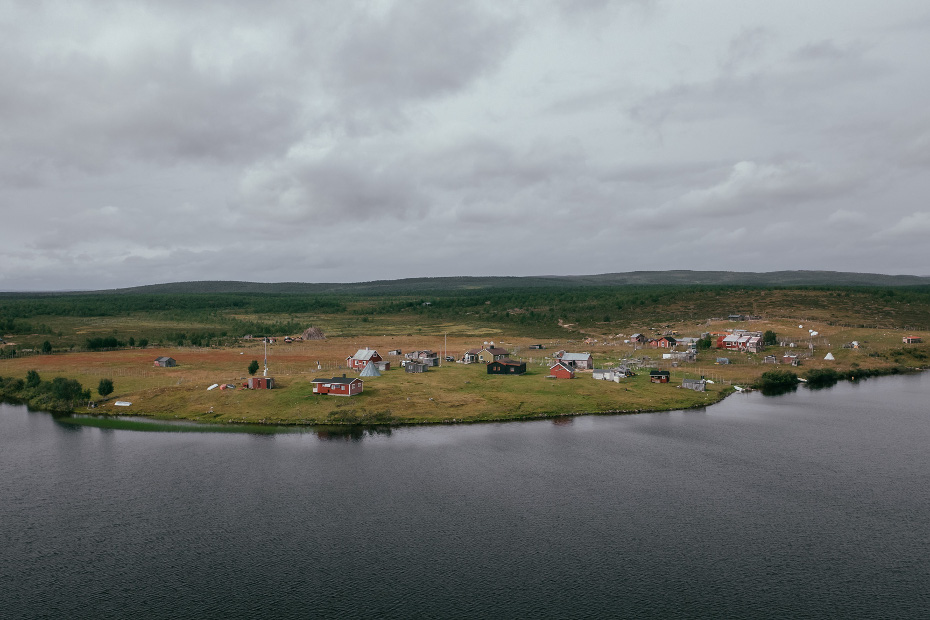
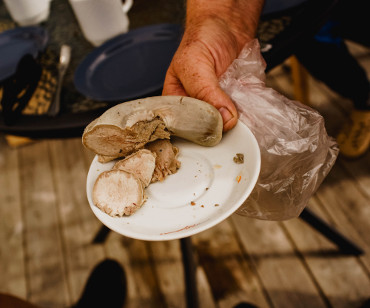
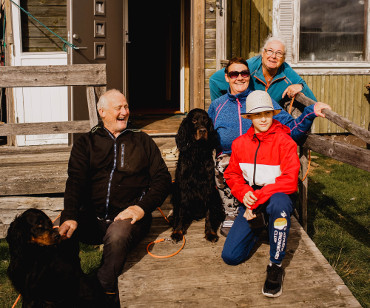


The hardest part of the route was now done. The final 145 km to Alta would be on a gravel road so we were confident we would be able to pick up our pace a little bit. After a hot shower and a good night's sleep, we were refreshed, following the river out of the town. By midday, we get above the treeline and enjoy the vast mountainous views. We make lunch at a reindeer herder’s tipi before riding along some of the longest straights we have ever seen. Given the openness of the landscape, there’s a unique tranquility here – it’s magical almost. True to tradition, we don’t make it to the Suolovuopmi fjellstua, an old mountain hut, with dry feet today either. The previous night’s rain had left big puddles on the road – some of which Henna got to experience thoroughly. The Fjellstua provided us a cosy stay and let us enjoy a delicious local dinner of arctic char and potatoes before going to bed.
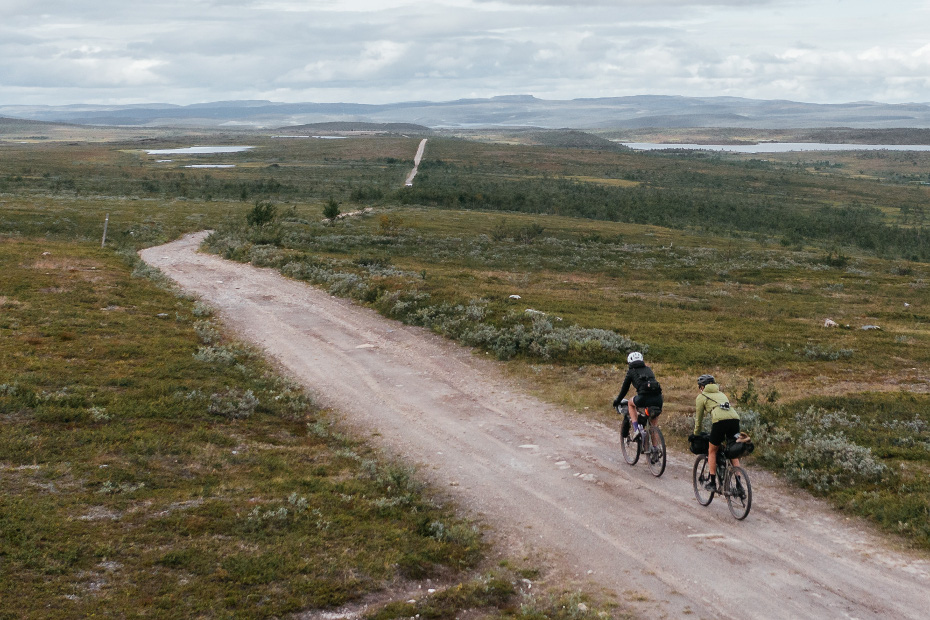
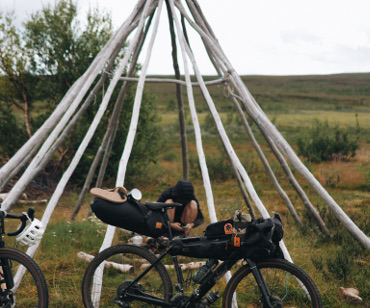
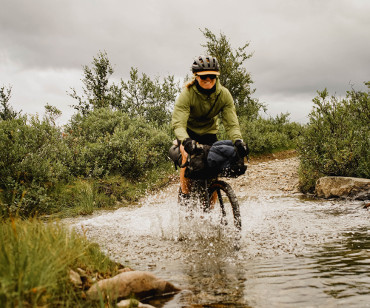
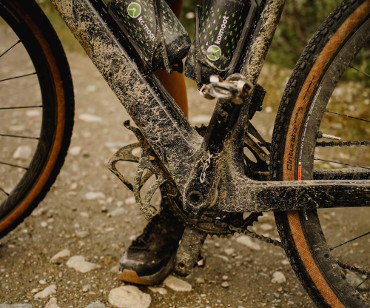
We had been faster than we expected – there was only 65 km to go to Alta and the gravel road was reportedly in a great shape. We started with a climb up to the fells where crispy northern winds welcomed us. On the horizon, we could see the high snow-covered mountains of Norway while we were cruising along these rolling hills above the vast highlands. A couple of reindeers soon turned into hundreds. “Even for a Finn,” Henna says in awe, “it’s a cool experience to ride among the reindeers and Sami turned into a proper reindeer whisperer on this trip.”. Another highlight of the final day was running into a mum and daughter duo with a dozen huskies that they were training to compete in the famous Finnmarksløpet, the longest dog sled race in Europe. Compared to our gravel bikes, they were moving at quite a pace, but were happy to let us stop and cuddle. Reenergised, we pushed forward to reach our final destination, Alta. Not to make the final part too easy, we hopped back onto the MTB route that consisted of singletracks along the river Alta. It’s hard to say for certain if we made the right decision here as some sections were great fun while others were too muddy to ride, but eventually we made it to the famous Alta church to finish our 380 km ride through one of the largest wilderness areas in Europe.
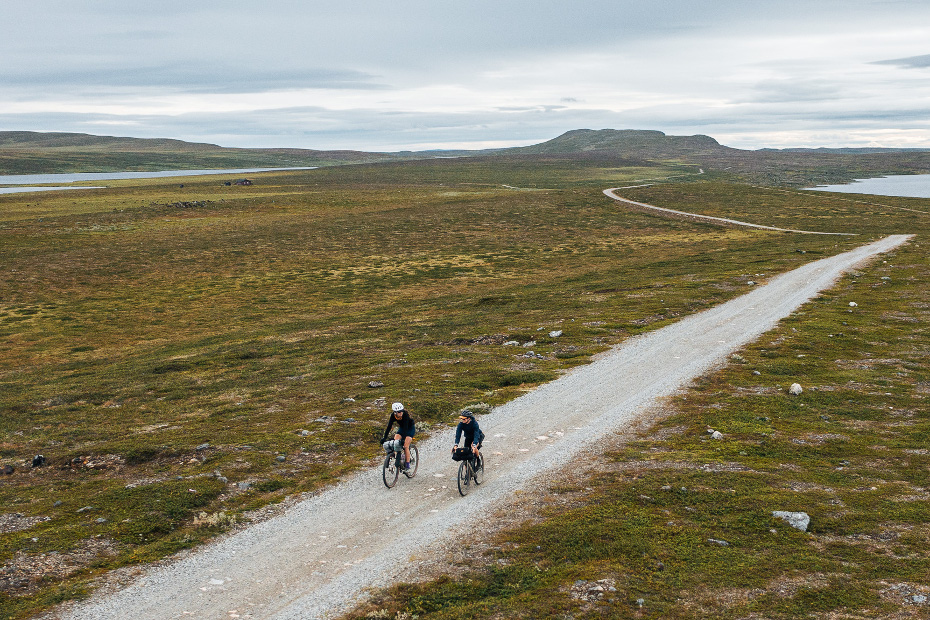
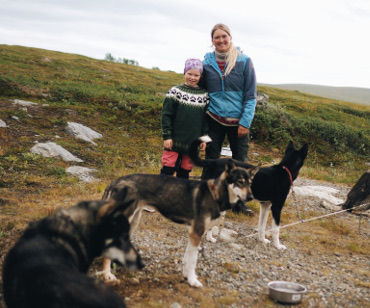
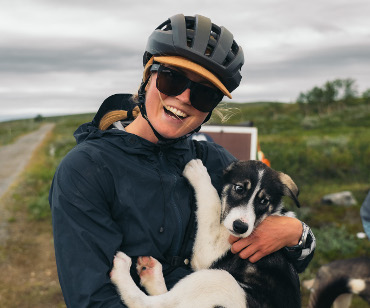
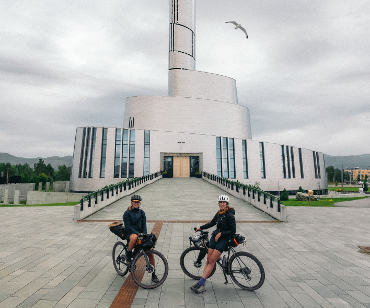
The weather may not have been the warmest, but the vast landscapes, reindeers, friendly locals and magical light made it an unforgettable trip – the kind that warms you more from the inside, than the out. And isn’t that why we all do this sort of thing?
